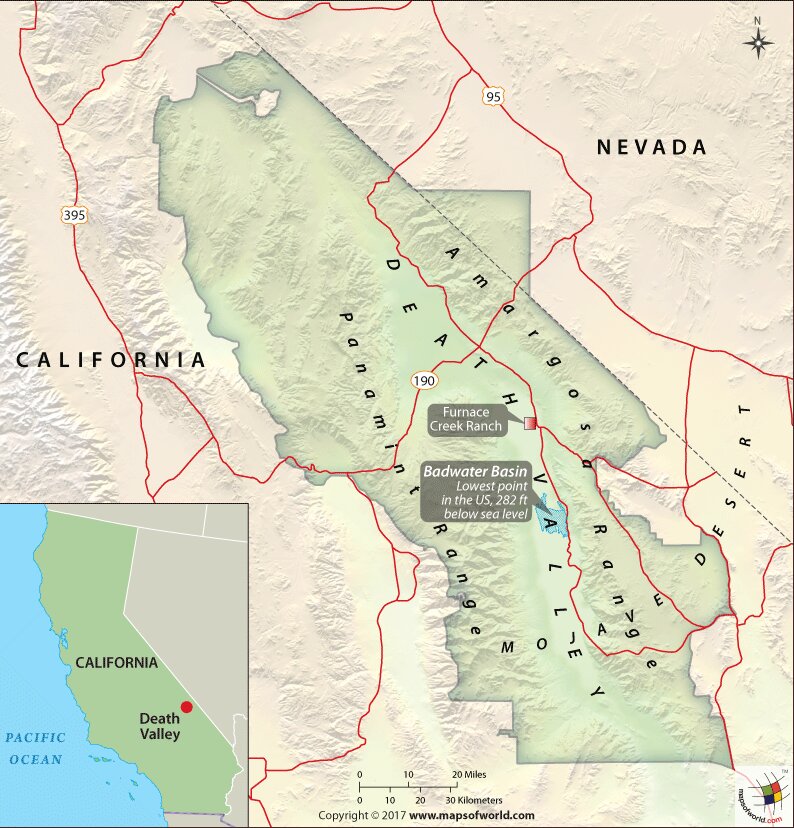High Temperature at Death Valley | 18 Aug 2020
Why in News
Recently, Death Valley (USA) registered a temperature of 54.4°C which, once verified, could be the highest temperature in more than a century.
- The temperature was recorded at the USA National Weather Service’s automated weather station at Furnace Creek on 16th August 2020.
- The Death Valley in southeastern California is the lowest point in the North American continent, and is a National Park. It is also the hottest and driest part of the continent.
Key Points
- The temperature has been termed as preliminary and not final as it awaits verification.
- According to the World Meteorological Organization (WMO), Death Valley’s all-time record high is 56.7°C taken on 10th July 1913 at Greenland Ranch.
- It still stands as the hottest ever recorded on the planet’s surface.
- However, since the temperature-recording mechanisms a century ago were not as advanced, many have doubted if that reading was reliable.
- Cause:
- The high temperature is a result of a ‘heat dome’ that is smothering the west coast of the USA.
- Heat Domes: High-pressure circulation traps hot ocean air like a lid or a cap trapping heat at the surface and favouring the formation of a heat wave.
- Higher daily peak temperatures and longer, more intense heat waves are becoming increasingly frequent globally due to climate change.
- The high temperature is a result of a ‘heat dome’ that is smothering the west coast of the USA.
- Effects of Extreme Heat:
- According to the World Health Organization (WHO), extreme heat can exacerbate pre-existing health conditions, including respiratory diseases, heart conditions and kidney disorders.
- The immediate effects on the human body are heat cramps, dehydration and even potentially fatal heat strokes.
- It can also have a severe impact on agriculture and forests.
- It either causes vegetables to wilt and die or encourage the spread of plant diseases.
- It causes wildfires which lead to forest cover reduction and death of fauna.
- It affects infrastructure too by straining power grids and causing blackouts. It can ground planes, melt roads and cause the inside of vehicles to overheat to dangerous levels.
- According to the World Health Organization (WHO), extreme heat can exacerbate pre-existing health conditions, including respiratory diseases, heart conditions and kidney disorders.

